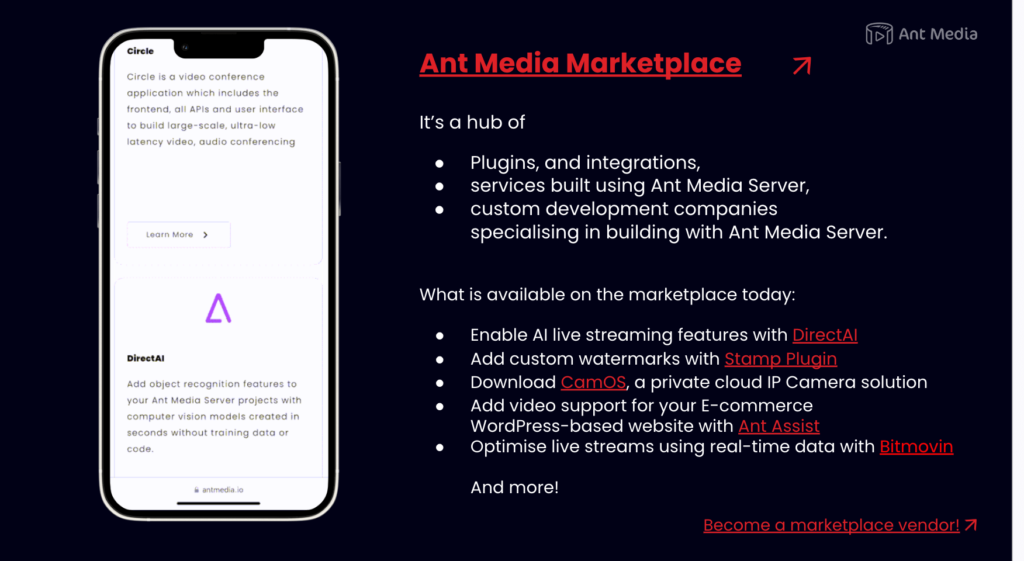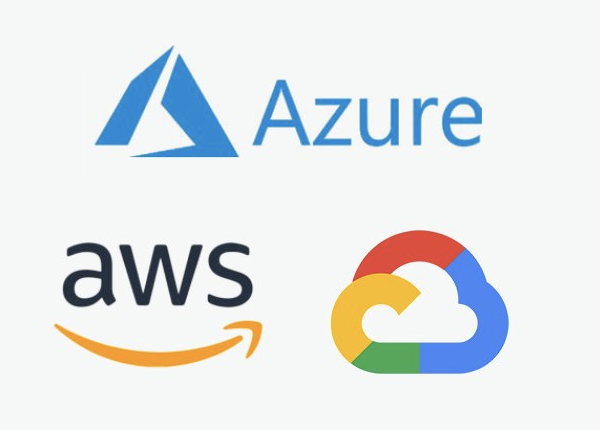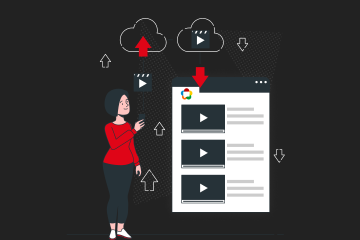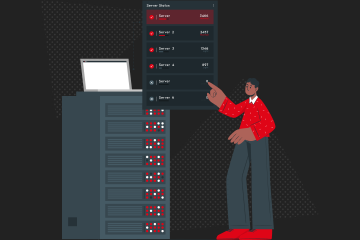In this guide, we will discuss 7, among many, why you should switch from Twilio Video to Ant Media Server. I will go over the differences between these two solutions and later provide you with step-by-step instructions on how to migrate your web and mobile applications from Twilio Video to Ant Media Server.
Make a strategic move towards a future-proof solution for your real-time video needs today!
Why Migrate from Twilio Video?
On December 4th, Twilio delivered the news that reverberated across the developer community – it had made the strategic decision to retire Twilio Programmable Video. As Twilio Video sunsets, users find themselves at a crossroads, urgently seeking an alternative WebRTC streaming solution capable of offering not just a replacement but a superior solution – one that excels in delivering top-tier, scalable, and ultra-low latency video and audio streams.
The journey toward a new web real-time communication (WebRTC) partner unfolds in the face of this pivotal moment. Among the options, Ant Media Server is not merely a substitute. It is a robust streaming engine renowned for its exceptional features and scalability.
Let’s compare Twilio Video and Ant Media Server side by side to understand their differences:
1. Customize/Control Your Video Flow
Twilio Video operates as a service. In this model, Twilio manages the underlying infrastructure and operations and users access Twilio Video primarily through APIs.
On the other hand, Ant Media Server, characterized as a product, is a streaming engine. As a self-contained solution, it provides users with a tangible software package that can be installed and configured on their infrastructure. Users have more control and flexibility over the deployment, customization, and maintenance of their streaming server.

Additionally, Ant Media Server supports plugin architecture and 3rd party application deployment to make your streaming server more powerful. Visit our marketplace to find extensions that you can install for your project and find ready solutions for your needs.
Lastly, for your custom needs, there is a community of users/developers that you can hire to develop applications or plugins according to your requirements.
2. Flexible for Any Video Streaming Use Case
Twilio video solution is mainly used for conferencing structure whereas the Ant Media Server finds its use for video/live streaming, conference, P2P & IP camera streaming.
Twilio Video supports WebRTC. On the other hand, Ant Media Server supports WebRTC, RTMP, SRT, RTSP pull, IP cameras, and stream source on the publishing side and WebRTC, Dash, and HLS playback.

Twilio Video supports up to 1080p resolution whereas Ant Media Server supports all kinds of resolutions up to 4K streaming.
Twilio Video supports H.264, VP8, and VP9 video codecs. Ant Media Server supports H.264, H.265, and VP8 video codecs with AV1 support to be introduced soon.
Ant Media Server supports server-side transcoding and the feature is available as a part of the server itself. Read about what transcoding is about in another article.
3. Stream at Scale and Pay Less
Twilio Video is billed according to minutes consumed. Ant Media Server offers a flexible pricing structure including Hourly (for cloud marketplaces only), Monthly, Annual, and Perpetual licenses. You can install Ant Media Server to an instance and it’s charged per instance. It means that you can take advantage of your hardware as much as much as you can.

With flexible licensing structures like Monthly, Annual, and Perpetual licenses for self-hosted and hourly & annual subscriptions for marketplaces, you can optimize performance while keeping costs down. Estimate your license and server requirements with our handy cost calculator. If you have questions about anything, don’t hesitate to get in contact with us!
4. Freedom to Deploy Your Solution to Your Favorite Cloud Provider
Twilio Video is a cloud-hosted service meaning you don’t choose where your streaming service will be deployed. Twilio centrally hosts it. Ant Media Server can be hosted on-premise or as some call it “behind a private network” as well as through cloud marketplaces. You can use AWS, Azure, Google Cloud, Linode, etc.

5. Rich REST API and SDK Support
Both Ant Media Server as well as Twilio Video have support for REST API. Twilio supports S3 recording and with Ant Media Server the recordings can be stored on S3 as well as locally.

Twilio Video supports JavaScript SDK, iOS SDK, and Android SDK. Ant Media Server has JavaScript SDK, native SDKs for iOS and Android, Flutter SDK, React Native SDK, Embedded SDK for IP cameras, and Unity SDK along with a rich set of APIs for easy integration.
6. Built to Scale Freely
Twilio Video supports quota-based scaling. It means that resources, capabilities, or usage limits are allocated to users or entities based on predefined quotas. So if you expect a higher load you first need to request the provider to increase the quota.
Ant Media Server uses resource-based scaling and can be scaled both vertically and horizontally. Vertical scaling means increasing the machine/server resources like CPU, memory, etc. Horizontal scaling means multiple serves clubbed together as we do in cluster structure.

In short, Ant Media Server can scale both vertically and horizontally. It means that your video streaming service can automatically scale its infrastructure up in response to increased viewer demand, ensuring optimal performance during peak times. Conversely, it can scale down efficiently during periods of lower demand, allowing for cost savings.
7. Quick Auto-Scalable Deployment
Even if you can install Ant Media Server through AWS, Azure, or Google Cloud Marketplaces to have a single standalone instance. You can install auto-scalable solutions according to your number of users. You can use Kubernetes or Auto-Scalable Groups in your Cloud Providers. Moreover, we’ve AWS Streaming Service Wizard that makes life easy for you.

In other words, AWS Streaming Service Wizard takes only 5 minutes to deploy an auto-scalable streaming service in AWS. You just need to provide the number of streamers and viewers that you expect. Then everything will be ready on your own AWS account. Just watch the live demonstration of AWS Streaming Service Wizard in the youtube video below.
In conclusion
Now that you’re familiar with the major benefits of using Ant Media Server, would you like to know what your streaming service will look like at the end of implementation?
Please stay tuned for a detailed step-by-step technical guide in which we will show how you can migrate your Web and Mobile applications from Twilio video to the Ant Media Server 🙂 Ensure you leverage our comprehensive documentation and community knowledge base to facilitate the migration process.

If you have questions or need any type of support, contact us via a form or schedule a meeting to have a coffee and chat, or write directly to contact@antmedia.io Let’s democratize live streaming together. We are here to help you and make this journey a memorable one!
Happy New Year,
Mohit


